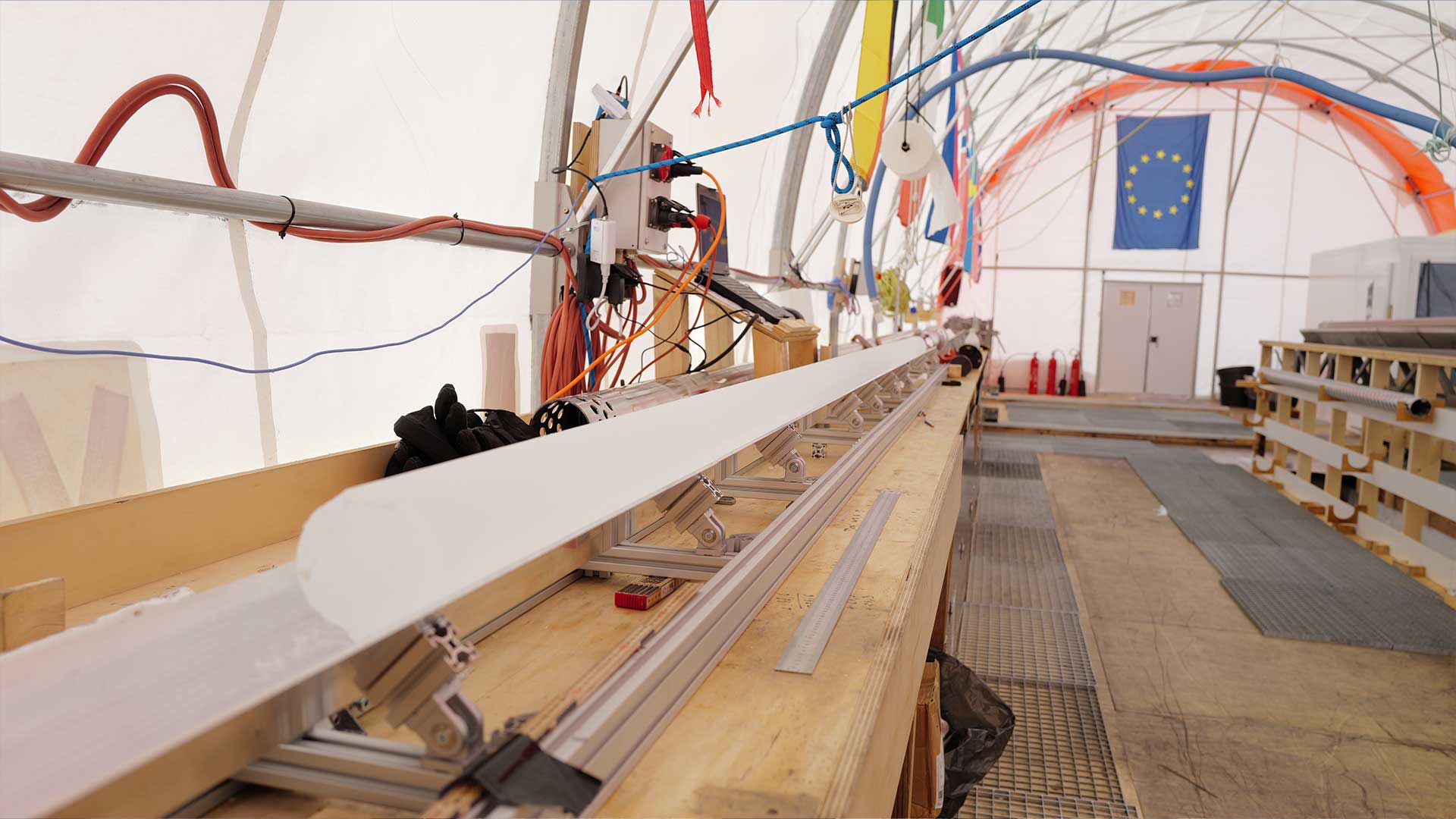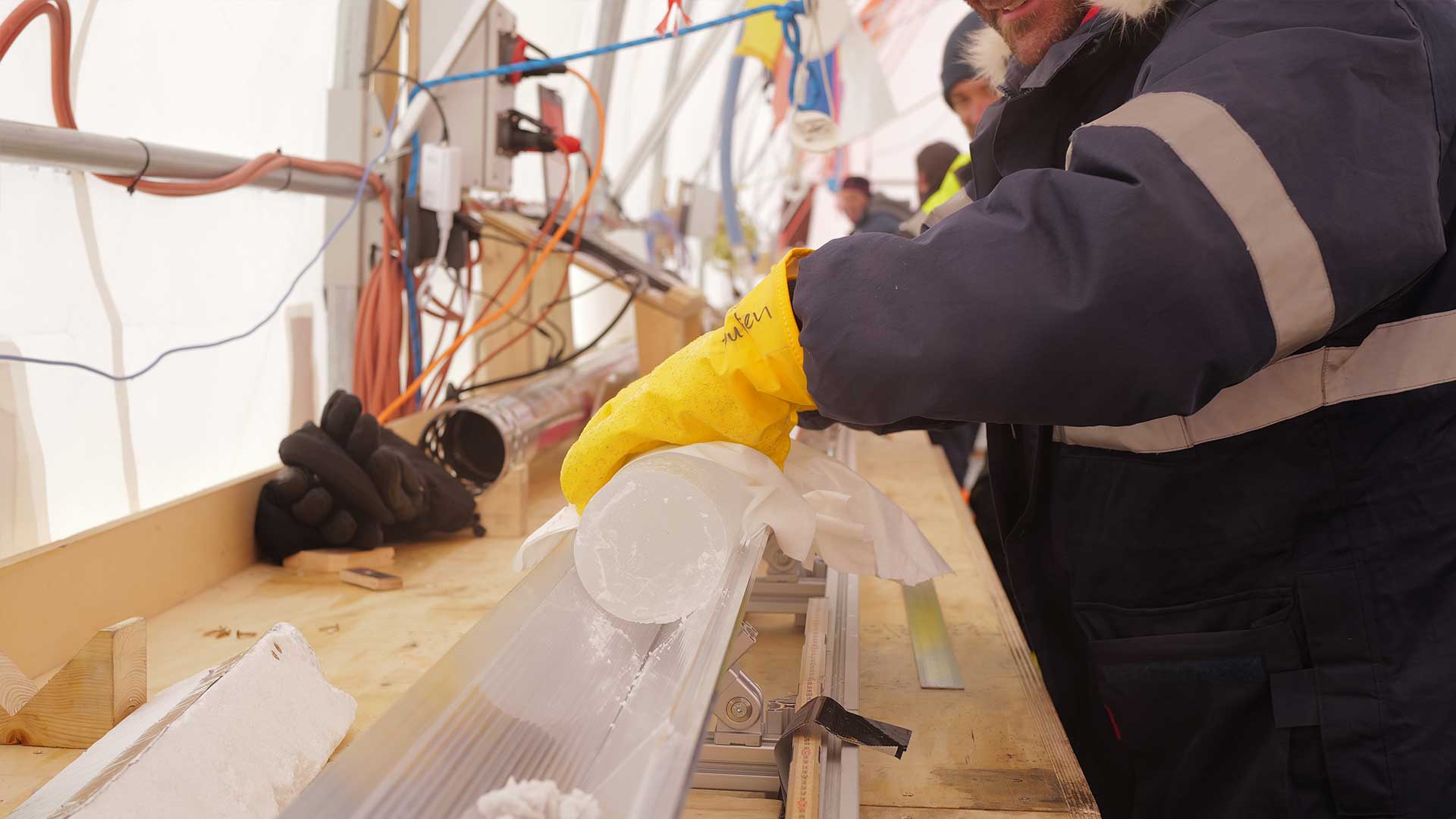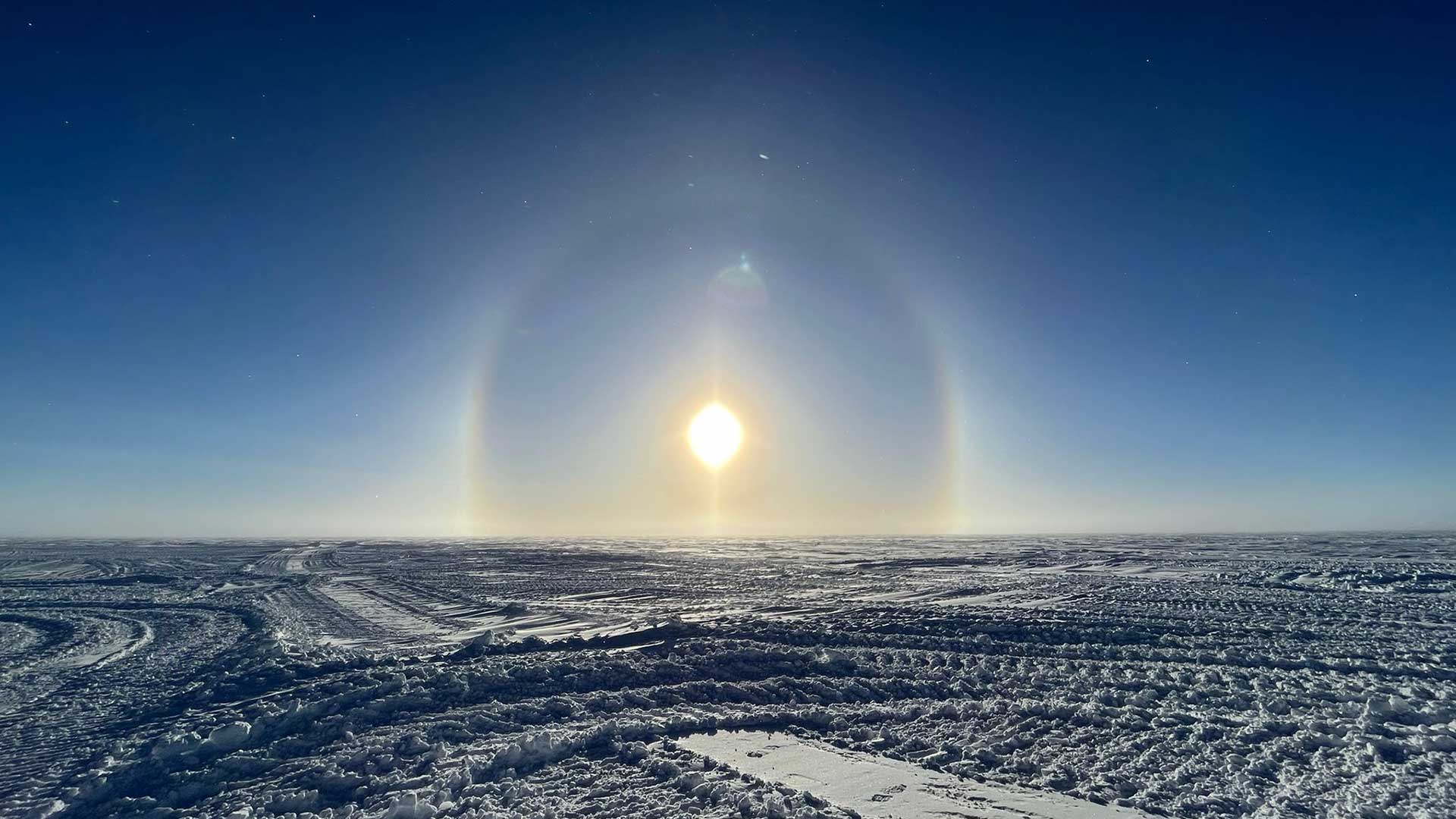Predicting the Future of Climate
Beyond Epica, coordinated by Carlo Babante and the Institute of Polar Sciences, is an international research project in Antarctica with a mission to conserve the environment.
Location: Antarctica
Date: 20th February 2024
Exploring the past, predicting the future of Climate:
By Beyond Epica
As a European scientific project, Beyond EPICA has a big commitment to the scientific research community and to society: trying to improve the scientific knowledge about the climate of the past. Reaching the oldest ice ever extracted in Antarctica, in the Little Dome C field camp, the Beyond EPICA project aims to obtain information about some unsolved research questions.
In fact, every scientific project starts with questions and uncertainties: it is what we don’t know that ignites the scientific passion for finding answers!
Discover the “Beyond EPICA questions” with us!
1) What happened 800.000 years ago?
Beyond EPICA takes the legacy from a project performed during the 90s: the EPICA drilling project.
EPICA aimed to obtain the longest and undisturbed chronicle of environmental change in the Antarctic ice sheet: an ice core. This ice core was extracted and analyzed in order to characterize the climate variability over several glacial and interglacial cycles, to study the potential climate forcings and their relationship to events in other regions of the world. In fact, the Antarctic large ice cap is an important source of information about past climate change and the associated composition of the atmosphere.
During the 10 years of the project, researchers and technicians worked a lot in Antarctica, not so far from the actual site of Beyond EPICA drilling. The goal was to retrieve two identical ice cores from Antarctica, reaching the lowest layers of the Antarctic ice sheet. The team successfully retrieved ice cores down to 3270.2 m of depth, “conquering” the oldest ice ever drilled: the retrieved core extended the record to an age estimated to be around 800 000 years old.
Analysis and comparisons with sediment cores, which cover longer time periods but at a lower temporal resolution, brought up lots of new information about the last 800.000 years in terms of climate: we know that the Earth experienced a drastic change in the cyclicity of cold and warm periods. Sometime between 1.2 million and 800,000 years ago, the cyclicity changed from 40,000 years to 100,000 years: cold eras became much longer and reached much lower temperatures than before. It is what it’s called the Mid-Pleistocene Transition.
The reasons for this change in cyclicity are still unknown: now the Beyond EPICA project wants to go deeper into the ancient climate, 1.5 million years ago, to collect new information and try to identify the causes of this climatic change.




2) Which were the climate conditions when the cyclicity changed from 40,000 to 100,000 years?
We know that the Pleistocene, the geological period when the Mid-Pleistocene transition happened, was a tumultuous epoch with major climatic changes. The first part of this age was ruled by a specific cyclicity in the alternation of cold periods then interrupted by warm periods: ice ages and interglacials alternated with a fairly precise cyclicity, that is, every 40,000 years. During periods of maximum expansion, more than 30 percent of the continental areas were covered by ice, which then extended over seas and oceans as well. But research on ocean sediment cores shows us that this very regular pattern was interrupted at a certain point, when this regularity changes suddenly and dramatically.
Getting to have a precise climatic picture of the conditions, the changes and the mechanisms can allow scientists to finally get a better understanding of climatic processes that occurred in the Mid Pleistocene Transition.
Under the Dome C areas, and more precisely under the Little Dome C site chosen for this project, the ice sheet covers several glacial cycles: this will give us a precise, temporarily ordered and continuous description of the atmospheric and temperature conditions that occurred. All this information will allow the scientific community to compare the processes of major climate change and to have a more general picture of the climate processes of the last 1.5 million years ago.
The analysis of ice cores is indeed the most powerful tool we have to determine how climate has changed in the past, and most important to relate this to changes in the atmospheric composition.
In particular, we will focus on concentrations of the principal greenhouse gasses: carbon dioxide (CO2), methane (CH4) and nitrous oxide (N2O) in the atmosphere of the past, in order to better understand their role in climate change.
Equally important will be to reconstruct the record of chemical components in past atmospheric: aerosols and water-soluble gasses, in addition to the composition of atmospheric gasses trapped in bubbles within the ice.
New evidences about the relationship between the carbon cycle and climate over a longer period will allow us to develop useful information to those working on future climate change assessments (IPCC) and will guide future model studies of climate and Antarctica in particular.




3) What will happen in the future?
The Beyond EPICA project is not just about the past, but looks at the future. The project wants to contribute to answer more accurately to the research issue of how the global climate is likely to respond to increased emissions of greenhouse gasses as a result of human activities.
But in order to “make previsions” about the future, it is necessary to determine how the global climate has responded to variations in greenhouse gas concentrations in the deep past: looking deep into the past leads us to look toward the future, since the study of the climate of our Earth's past is deeply intertwined with the study of the climate of the future. Knowing what mechanisms have driven the climate variations that occurred in the past helps us develop reliable models for predicting climate changes in the future.
Nowadays, there is a significant concern about emissions: it is proven that carbon dioxide and other greenhouse gasses can cause a significant rise in global temperatures by the middle of the next century and there are little doubts that there is a close relationship between atmospheric greenhouse gas levels and global temperature. What is still uncertain are the extent and speed of the changes, and how they will be distributed regionally: the scientific community can rely on earlier ice core studies in central Greenland and Vostok, Antarctica, but we need further confirmation.


The archives obtained from the cores will also provide unique evidence on the role of the different elements in the climate equation, including forcing factors (greenhouse gasses etc), climate variability, and long term climate/ice sheet interactions.
With Beyond EPICA we want to obtain the first high-resolution climate record over the 1.5 million years and use the new climate record to constraint the cause of the MPT and long-term carbon cycle-climate feedbacks: expanding the record about past climate changes will give us a chance to understand the past, and an opportunity to improve projections and predict future climate, and in particular to assess the impact of anthropogenic effects.
In addition, a part of the extracted ice core will be stored in Antarctica: future generations of scientists will be able to analyze this unique scientific archive with more precise and sophisticated techniques, and with a more fine-tuned background of scientific knowledge than we have today.



























